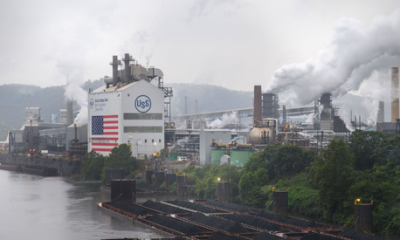Energy & Critical Metals
China’s Reopening Has Been A Boon For Metal Markets
The Chinese stock market reacted to Beijing’s about-face on COVID infections with a surge in prices, particularly in tech stocks. Due to a strong correlation…

The Chinese stock market reacted to Beijing’s about-face on COVID infections with a surge in prices, particularly in tech stocks. Due to a strong correlation with the stock market, metal prices have continued to rise since December. The expectation is that abandoning any meaningful attempt to control the spread of the virus will allow the economy to bounce back significantly following two years of harsh lockdowns.
Currently, the world faces a recovering Chinese economy, a weak dollar, and the growing expectation the global recession may not be as bad as feared. All of these could support the case for higher prices this year. Goldman Sachs recently raised their forecasted 2023 earnings growth for Chinese equities to 17%. Many investors also believe that the Fed already has peak interest rates in sight, which caused last year’s dollar strength to reverse.
The jury is still out on recession fears. However, there is a growing expectation that Beijing will find ways to support the beleaguered domestic construction sector this year. At the very least, the government will prop those parts of the industry deemed viable and which have yet to default. Certainly, the bonds of the more solid property companies have recovered of late. According to the FT, most of these are back at face value from their previous distressed level
Chinese Consumption Could Further Impact Metal Prices
Meanwhile, despite weak prices in Q2 and Q3 of 2022, China’s metals consumption increased at a relatively healthy rate. According to Reuters, both copper and aluminum imports rose significantly. The country’s net imports of refined copper totaled 3.64 million tons last year, an increase of almost 300,000 tons over 2021. This also represents the second-highest tally after a record-breaking 2020.
Simultaneously, imports of mined concentrates notched up to a new annual record of 25.32 million tons. In fact, imports of copper scrap were the highest since 2018. That said, visible inventories within China remain historically low, and metal prices are reacting accordingly. The Reuters article suggests that at least part of the buying spree could be the State Reserves Bureau replenishing its stocks. Indeed, the SRB were sellers when copper was at $10,000 per ton, but they may have started buying when prices dropped to $6,500 last year.
Increases in Imports Support a 2023 Price Jump
In other China metal news, aluminum imports have surged, particularly from Russia. In fact, China exported 843,000 tons of raw alumina to Russia last year, up from just 1,750 tons in 2021. According to another Reuters article, the former also continues to import refined metal in ever greater quantities.
Indeed, imports of Russian aluminum surged by 59% to 462,000 tonnes, up from 291,000 tonnes. At the same time, the ratio of Russian metal in China’s import mix shot up to 69% in 2022 from just 18% in 2021. A portion of that metal will have found its way into the 6.2m tons of Chinese semis exported that year. However, most were likely absorbed by demand for “green” low-carbon aluminum. After all, Rusal’s material is nearly all produced using hydro power. Meanwhile, imports of Russian unwrought alloy also mushroomed by 71% to 57,000 tons. This officially makes Russia the largest non-Asian supplier of casting alloys to the Chinese market.
If Chinese Manufacturing is High, Why are Metal Inventories Low?
According to sources, China’s manufacturing sector remains busy. This is despite the damage caused by lockdowns and a drop in the export of finished products to Western markets. If the expected support for the construction sector continues to build, it will support metal prices, in particular aluminum, copper, and steel rebar. Of course, construction continues to make up a significant percentage of the overall demand for these metals.
Ultimately, China’s consumption of base metals and steel products represents a significant percentage of global demand. Therefore, an increase could have major repercussions on a market already facing near-historic low levels of inventory. This supports the expectation that metal prices will likely rise in the year ahead. By how much, of course, remains to be seen.
By Stuart Burns

Uranium Exploration Company Announces Additional Staking in the Athabasca Basin
Source: Streetwise Reports 12/22/2023
Skyharbour Resources Ltd. announced an update from its Canada-based Falcon Project along with additional…
Tesla Launches New Mega Factory Project In Shanghai, Designed To Manufacture 10,000 Megapacks Per Year
Tesla Launches New Mega Factory Project In Shanghai, Designed To Manufacture 10,000 Megapacks Per Year
Tesla has launched a new mega factory…
Giving thanks and taking stock after “a remarkable year”
An end-of-year thank you to our readers, industry colleagues and advertisers before Electric Autonomy breaks from publishing until Jan. 2
The post Giving…


















